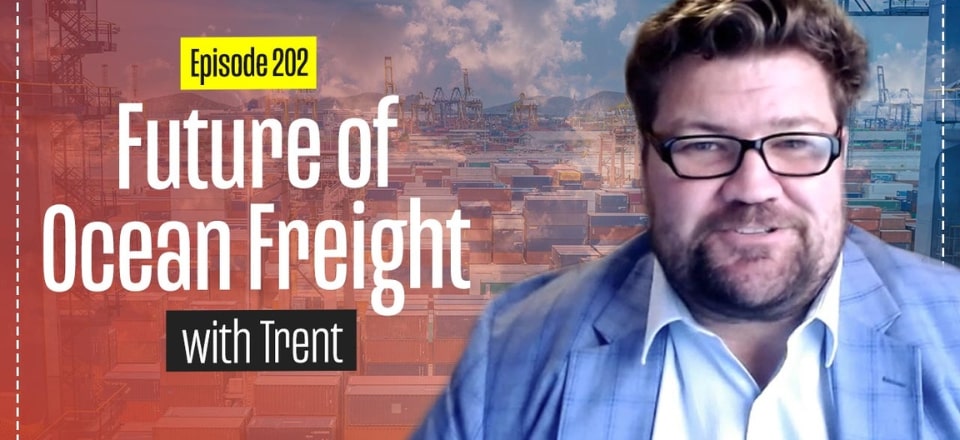Have you ever wondered what lies ahead for international logistics and ocean freight?
For professionals in this field, staying on top of the latest developments and trends is crucial to success.
Trent Morris is here to guide you through the exciting transformations reshaping the industry.
Prepare to set sail into the future of logistics with an expert by your side—and be sure to watch the full video below!
Trent recently attended the TransPacific Maritime Conference in Long Beach, CA. This high-profile event gathered CEOs from major shipping lines, government agencies, and key logistics players, offering unique insights into the shipping industry’s future.
Carbon Neutrality Mandates for Shipping Companies
The International Maritime Organisation (IMO) has mandated that shipping achieve zero carbon emissions by 2050. Many companies are striving to reach halfway by 2030. This shift is driving research into alternative fuel sources, including ammonia, synthesised LNG, hydrogen, and nuclear power, each posing unique costs and logistical challenges. For example, while nuclear energy is a zero-carbon option, its cost and waste management requirements make it controversial.
Port Infrastructure and Automation
Ports are also seeing advances, with automation being used for container handling and transport. Technologies like Automated Guided Vehicles (AGVs) are already in action, improving container movement. However, challenges remain—particularly with large vessels like the 22,000 TEU ships, which require repositioning to unload safely. The industry sees potential in transitioning from truck-heavy container handling to rail systems, though logistical changes will be required.
Legislative Changes on the Horizon
As governments grow concerned with the shipping industry’s environmental and consumer impacts, regulatory changes may soon come. The bill of lading, a longstanding industry standard that generally favours shipping lines, could be adjusted to better serve governments and customers. These changes are likely driven by consumer expectations for sustainability and economic fairness.
Consumer Impact and Industry Responsibilities
With a shift toward sustainable fuels, shipping costs will likely increase, potentially affecting consumer prices for imported goods. As these transformations unfold, governments may also need to invest in infrastructure improvements, from port expansions to rail networks, to support the industry’s eco-friendly direction.
In summary, Trent underscores that shipping’s future is shaped by three forces: technology, environmental mandates, and consumer expectations. As the industry works to balance these demands, we may see a new era in shipping—one driven by cleaner fuels, legislative adjustments, and infrastructure modernization. This decade could be transformative for logistics, redefining shipping operations, consumer prices, and international trade dynamics.
Related articles on this topic have appeared throughout our website, check them out:
- The Challenge of Freight Container Utilisation and Why it Matters
- Container Freight Costs and Forecasting: Intrinsically Linked & Frustratingly Challenging
- Do You Know When it’s Time for a Freight Review?
Editor’s Note: The content of this post was originally published on Logistics Bureau’s website dated May 31, 2023, under the title “Ocean Freight Future Trends with Trent Morris“.




